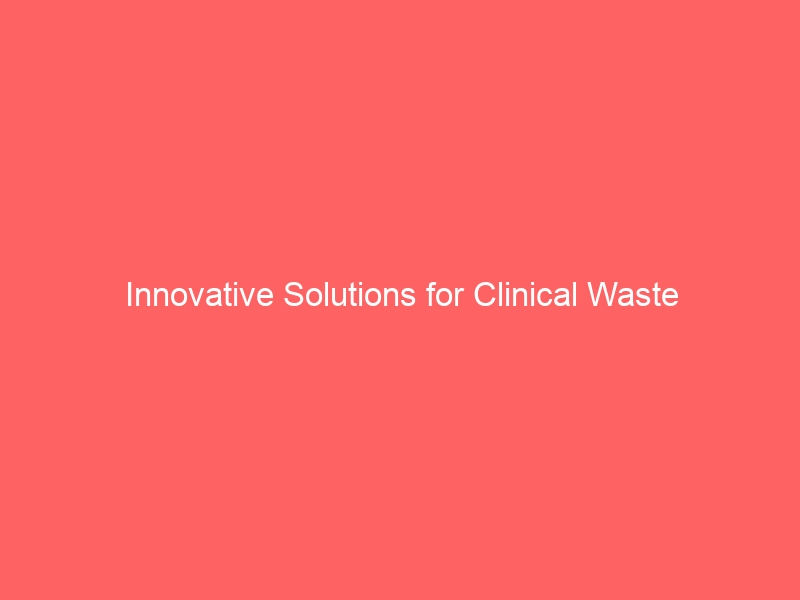Clinical waste, which includes any waste generated during clinical or medical procedures, is a significant environmental and public health concern. Improper treatment and disposal of clinical waste can result in the spread of infectious diseases, contamination of soil and water, and harm to wildlife and ecosystems. As a result, there is a growing need for innovative solutions for the treatment of clinical waste.
Fortunately, promising technologies are on the horizon that offer more efficient and sustainable ways to manage clinical waste. These innovative solutions have the potential to not only minimize the environmental impact of clinical waste but also reduce the risks associated with its handling and disposal.
One such promising technology is autoclaving, a process that uses high-pressure steam to sterilize clinical waste before it is disposed of. Autoclaving has been used for years in the medical field to sterilize medical instruments, but it is now being increasingly used for the treatment of clinical waste. This process reduces the volume of waste and eliminates the risk of infection, making it a safe and effective method for managing clinical waste.
Another innovative solution for clinical waste treatment is the use of microwave technology. This process involves heating the waste using microwave radiation, which effectively sterilizes it. Microwave technology offers a quick and efficient method for treating clinical waste, and it can be integrated into existing waste management systems with ease.
Furthermore, there are advancements in chemical treatment technologies, such as the use of ozone and plasma, which can effectively sterilize clinical waste. These technologies offer a non-thermal approach to waste treatment, which reduces energy consumption and minimizes the environmental impact of the treatment process.
In addition to these technologies, there is also a growing interest in the use of biological treatment methods for clinical waste. Biological treatment involves the use of microorganisms to break down and decompose clinical waste, turning it into harmless byproducts. This method not only reduces the volume of waste but also produces compost that can be used as a soil amendment.
Moreover, advancements in waste-to-energy technologies are offering a sustainable solution for the treatment of clinical waste. These technologies can convert clinical waste into energy through processes such as incineration, gasification, or pyrolysis. By turning waste into energy, these technologies not only reduce the volume of waste but also provide a renewable source of power.
The development of these innovative solutions for clinical waste treatment is a positive step towards creating a more sustainable and efficient waste management system. With the implementation of these promising technologies, the environmental and public health risks associated with clinical waste can be significantly minimized. It is crucial for healthcare facilities and waste management authorities to invest in these innovative solutions to ensure the safe and responsible treatment of clinical waste. By doing so, we can create a cleaner and healthier environment for current and future generations.
Innovative Solutions for Clinical Waste Treatment: Promising Technologies on the Horizon



